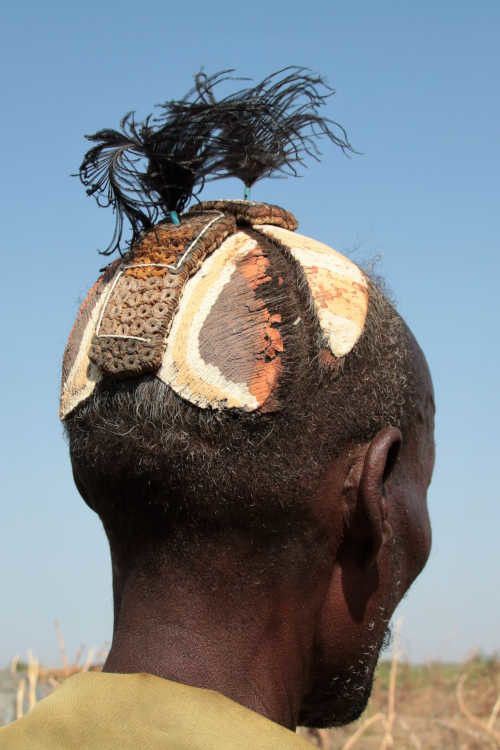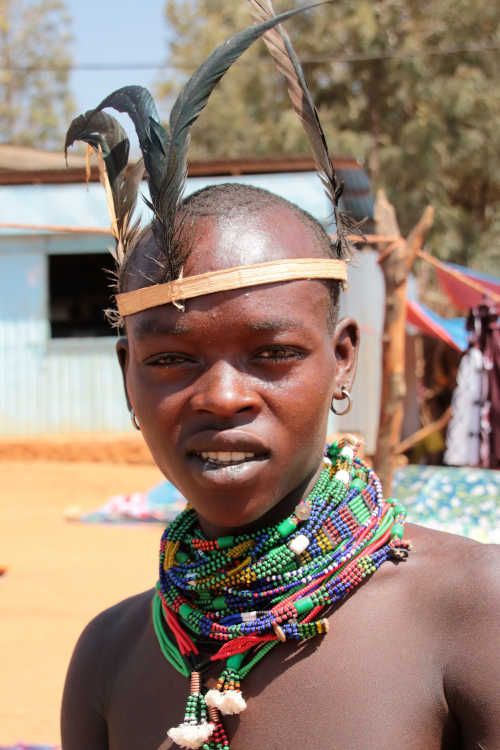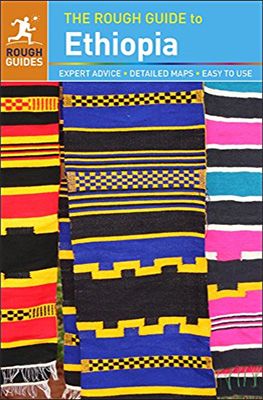The south of Ethiopia is known for its rich tribal culture. There are about 20 different tribes living in the Omo Valley, around the river of the same name. They still live in an ancient, traditional way and travel around with their cattle. It is truly a unique part of the world. They all have their own costumes, hairstyles, decorations and huts.
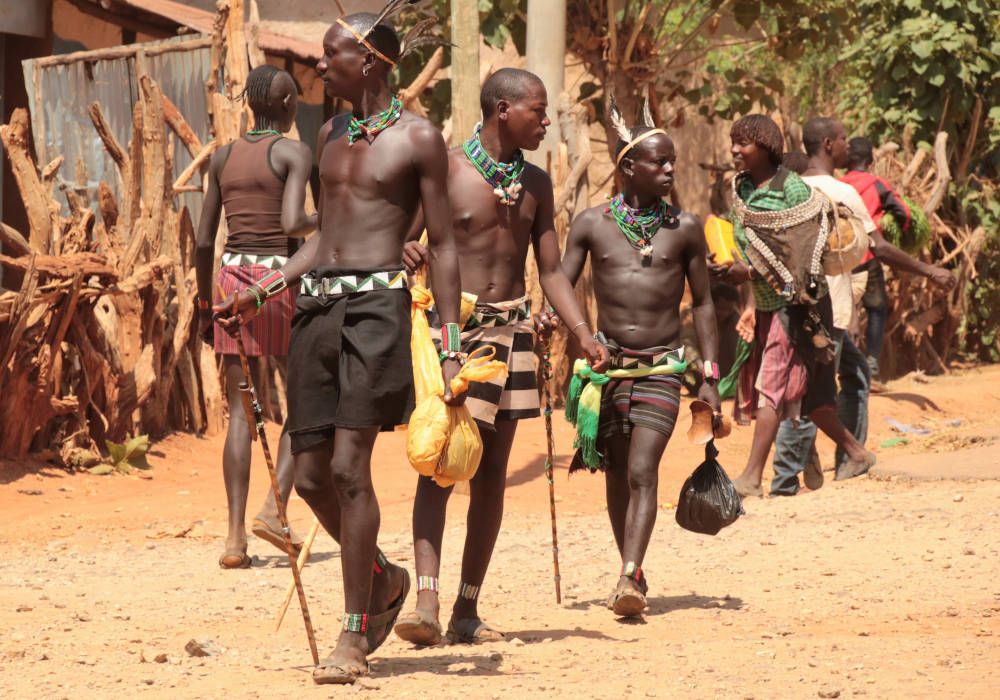
The weekly market
It is special to meet the tribes at the colourful weekly markets. The market is the place for the tribes to see their families and tribesmen from a few villages. It is also the location for young people to find a suitable marriage candidate.
As the day progresses, you can see that the stalls with their own brewed drinks (the tej, made of honey with water and herbs) are getting busier and busier. The alcohol percentage can be high and the later it gets in the day, the more men and women are tipsy and drunk.
When visiting a market, a local guide is required. Someone who comes from the region and speaks the language of the tribe. The guide can tell you everything about the customs and lifestyle of the tribe.
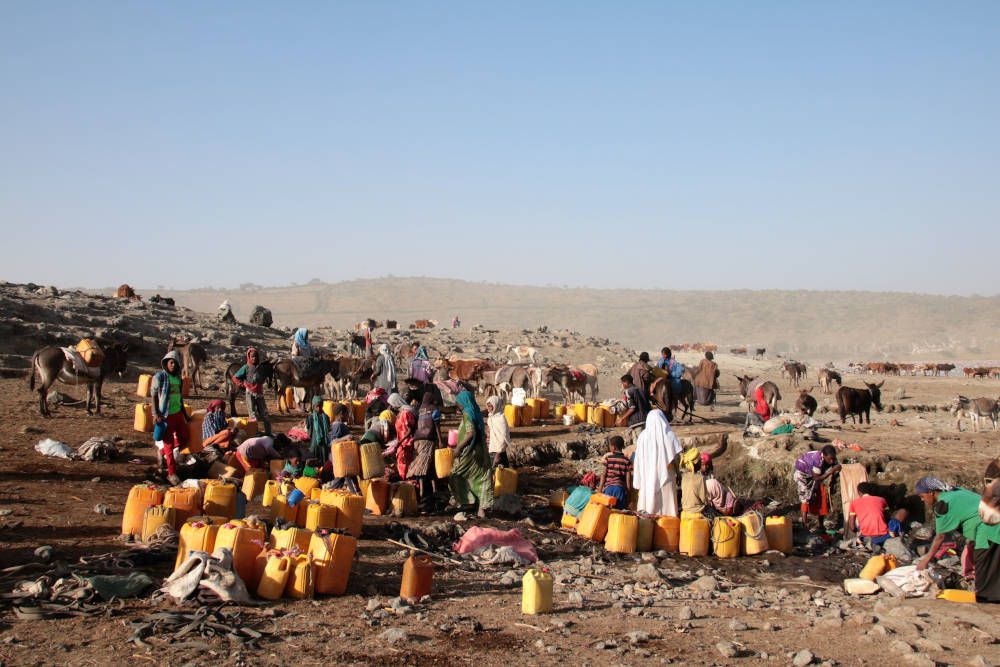
Some tribes in southern Ethiopia
We mention some tribes that are well worth a visit. To get to the villages easily, a 4WD is necessary. Not every village is situated along the main road.
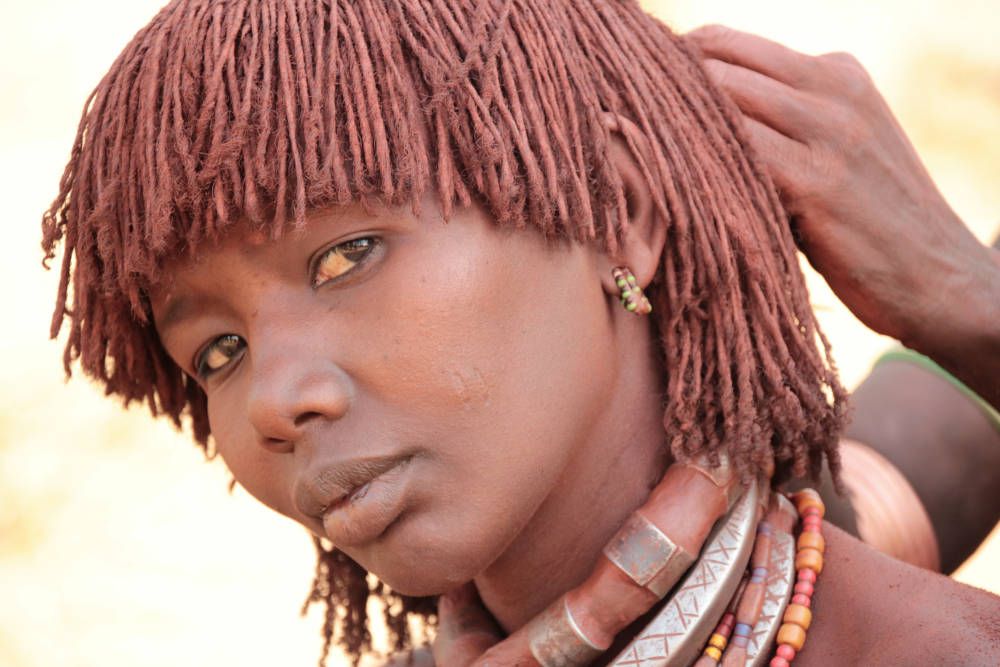
The Hamar tribe
The Hamar tribe is the largest tribe living in the Omo Valley. The Hamar is known for its hairstyles, to which a lot of attention is paid. The hairstyles are modelled with clay and butter. The women have dreadlocks that are repeatedly treated with butter. The men have a very artistic hairstyle that is covered layer by layer with clay, butter and water. They sleep with a small stool under their head so that the hairstyle remains beautiful. The stool is also a handy chair that can be taken everywhere.
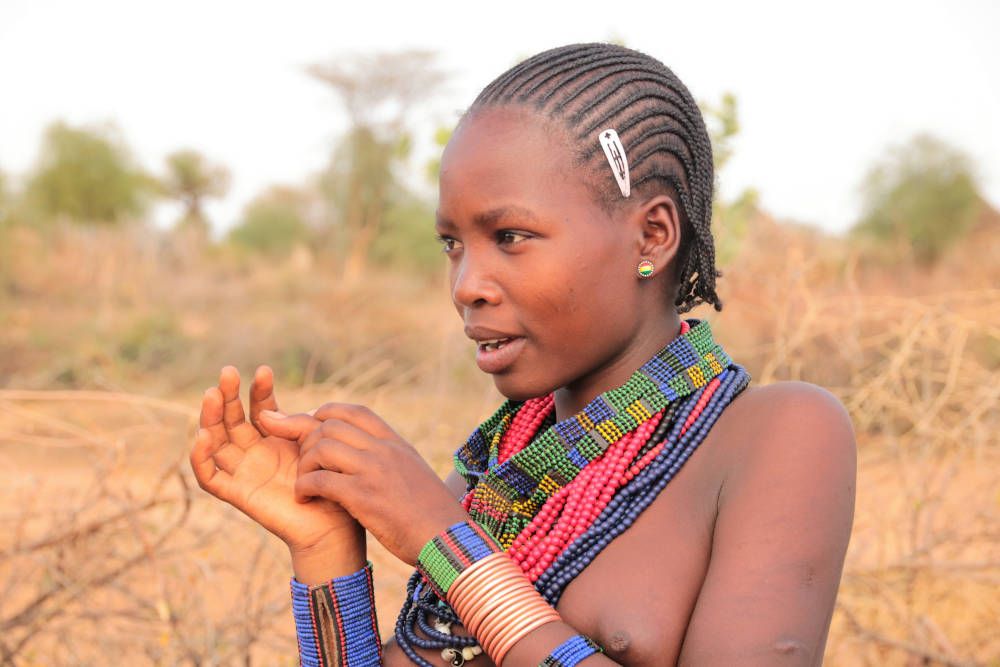
The covering of the body of the women is a piece of sheet from a cow or goat that is deposited with calcareous beads. Their arms are decorated with metal bracelets and beads. Around their neck they have metal rings that show whether they are the first or one of the next women to be married. Also, the wealth of the man is clear through the woman’s necklaces. The young girls only wear coloured bead necklaces.
A special ritual of the Hamar is the initiation of boy to man, the “bull jumping”. One day, the boy has to show his courage by walking naked on the backs of seven cows or oxen. The ritual can last for days and is prepared by family and friends. The sorghum beer flows abundantly and it seems as if the women go into a trance on the sorghum beer. Dancing and singing, with bells ringing at their ankles, they show their support to their family member.
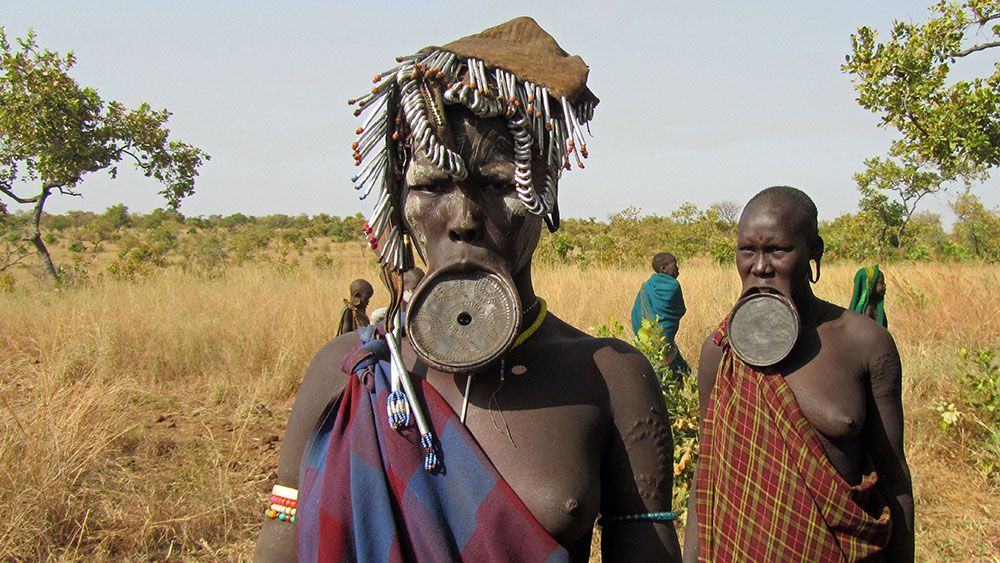
The Mursi and Suri tribes
The most famous strain is the Mursi tribe and the related Suri tribe. The women decorate themselves by placing a saucer made of clay on the lower lip. Their earlobes are also stretched. Wooden saucers are placed herein. The headdress is often decorated with iron rings and coloured beads. The face is painted white. The men paint their whole bodies and often make beautiful lines in them.
When a girl is 15/16 years old, the lip is stretched. The larger the lip plate is, the more it is worth in a marriage. The lip plate is mainly worn at parties and important events. Now they are quickly put in when a car with tourists stops. The older women wear the dishes less and less. When her husband dies, the woman throws away her dish.
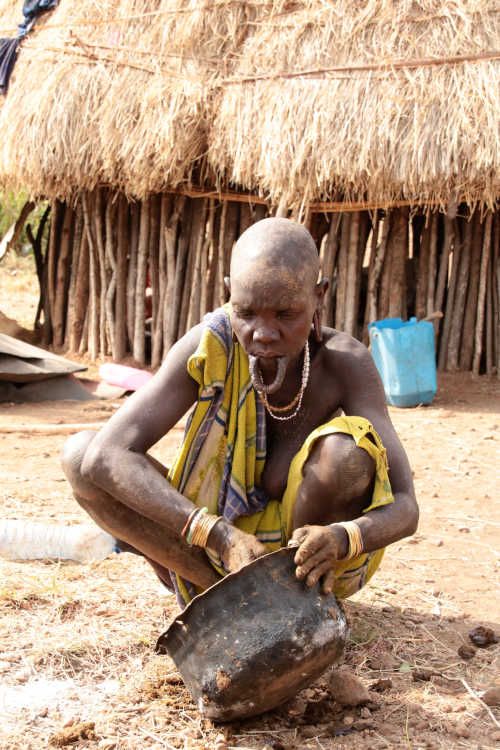
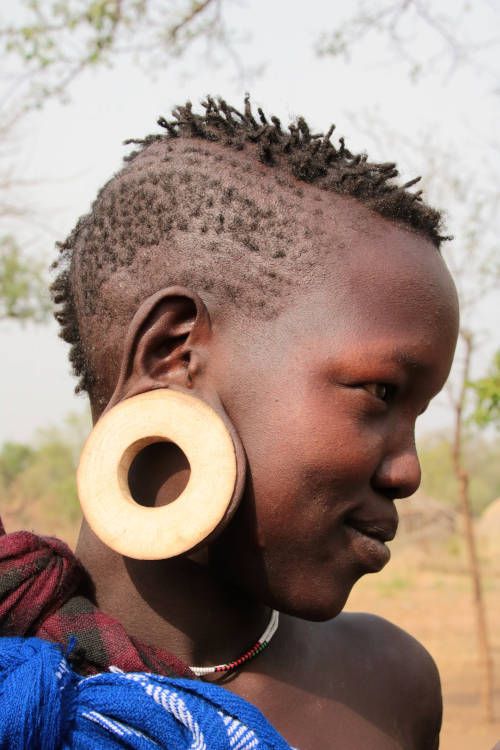
As with other tribes, the men have to do a test before they can get married. For the Mursi this means a fierce stick fight with another man, with the women watching. When one of them gives up the fight, the other is allowed to choose a woman. The man often receives a Kalashnikov as a wedding present.
It is good to visit the Mursi early in the morning. The tribal members like to drink a glass of “areke”. They buy this homemade drink with the money they earn by posing for pictures. Later in the day some people get drunk and it is better not to be in their village.
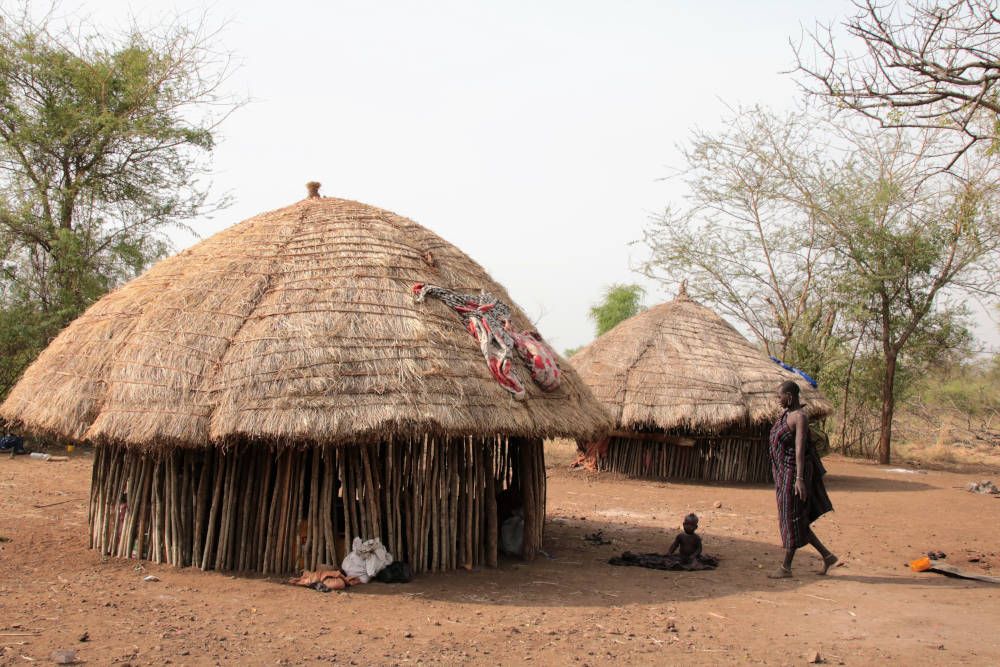
Other tribes in Southern Ethiopia
In addition to the Hamar and Mursi tribes, there are many other tribes. We highlight a few of them:
The Dassenech people
The Dassenech tribe lives in a dry riverbed. The Dassenech also pays a lot of attention to its appearance. The forehead is shaved. In addition, they braid their hair tightly over the head.
The Dorze tribe
The Dorze tribe was originally a farmer, but has increasingly focused on weaving. Everywhere in Ethiopia you come across the fabrics and canvases that are made in this region, such as the white shawl, the shamma.
The Karo tribe
The Karo tribe is very creative in body and face painting. They often have a large long nail through their lip as a sign of beauty.
The Konso tribe
This tribe has a different lifestyle than most other tribes in southern Ethiopia. The Konso irrigate terraces for their agriculture. The Konso tribe worships their ancestors by placing large wooden statues (Wagas) of them.
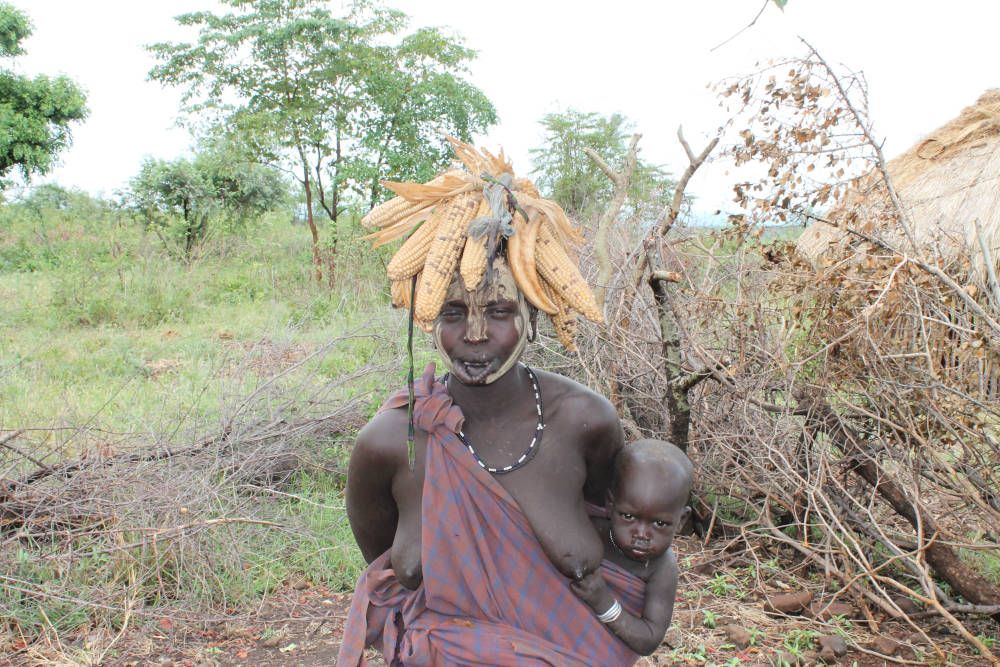
Practical matters – tribes in Southern Ethiopia
- Local guides are required. Also to enable communication with the tribes.
- Pictures may be taken in return for payment of a small fee to the person who poses for the picture. Don’t try to take pictures unnoticed, this is often not appreciated.
- Make sure you have enough change, preferably in clean and unfolded notes, to take the pictures.
- A visit is possible from Turmi, Jinka and Aba Minch. There are also several good lodges here. Keep in mind that the price is much higher than in the north. In Turmi, the Buska lodge or the Turmi lodge are good choices with a good restaurant.
- In Jinka it is more difficult to find good accommodation, but still possible. The Eco Omo lodge is good and if you are an adventurer it is also possible to camp there.
- Arba Minch has enough choice to stay overnight. Nearby you will find the Dorze lodge. It is owned by the Dorze people. The co-owner is from Europe. From the Dorze lodge you can go on beautiful treks. The owner can advise you on this.
- There are resorts owned by the Ethiopian runner Haile Gebreselassie at various places in the region. These are good choices; they often have a swimming pool.
